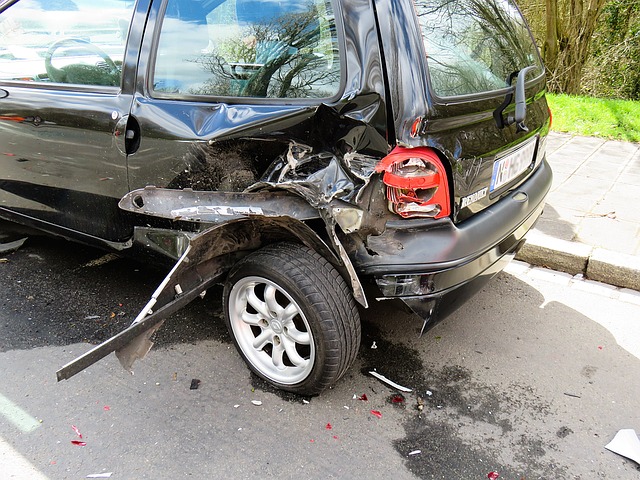Posts by Hayes
Chiropractic is Frontline Healthcare for Chronic Pain Management
Chiropractic is first-line pain management and general wellness care
At Hayes Family Chiropractic, we believe that living well means living without pain. Or at least, living with as little pain as possible given the circumstances. Chronic pain is defined as pain that last for more than 3 months, which makes for a very broad category. Chronic pain could evolve from a seemingly innocuous acute injury, or it could be a symptom of a debilitating condition like spinal stenosis or arthritis. Perhaps inevitably, once it rears its ugly head, it seems that chronic pain has come to stay. It makes aging uncomfortable and makes you less able to enjoy your life.
Face to Face with Hypermobility: When Excess Range of Motion Causes Pain
Are you more mobile than most people?
While lack of range of motion has become ubiquitous in society, the health world places a lot less focus on people who have hypermobility. Hypermobility, known more commonly as loose joints or double-jointedness, occurs in about 10% of the population. Often genetic in nature, it comes down to a factor known as congenital, or ligamentous, laxity: essentially, But the problem is that hypermobility often coincides with instability- and for this reason, hypermobility can contribute to pain and dysfunction in the joints; in extreme cases, and often as the individual gets older, this pain can become chronic. At this point we call it hypermobility syndrome, a condition that is treated most effectively by focusing on adding in stability through sustainable strength training.
Regaining a Normal Life Post Accident
After the accident
Even after a “small” accident, your life is heavily impacted; even if you deem yourself uninjured, there can still be psychological scars and injuries under the surface. After all, the human body can only withstand so much radical movement; a seemingly innocuous accident can push our bodies to the outer limit of their range of motion through rapid, damaging motions like whiplash. Driving-wise, you may lack confidence on the road or find fear in previously neutral situations. But it is important to remember that, in all this, your health is the most important factor in a post-accident world. As you navigate the realms of insurance claims, be sure to check in with a primary care physician, chiropractor or physiotherapist to ensure that your body hasn’t suffered damage under the surface. Our previous blog here covers Florida’s Personal Injury Protection statue and the importance of seeking care within the first 14 days of an accident. Read on to find out why choosing chiropractic is the right choice.
Understanding Personal Injury Protection in Florida
PIP is the main form of insurance coverage for vehicle drivers in the state of Florida
Florida PIP is a no-fault insurance coverage that helps motorists pay medical bills and lost wages in the even of auto accident and injury in the state of Florida. Whether you are a rush-hour commuter or a leisurist day-tripper, you should know at least the basics of this law. A lot depends on whether a patient was treated within 14 days of the collision; if yes, we proceed with treatment on the patient’s PIP; if no, no coverage applies. What does this mean for you? It means that, whether you are feeling symptoms or not, you should take advantage of the first 14 days that you are covered to check in with a health professional! This rule also applies to musculoskeletal injuries in general, as you will find later in this blog.
If you were treated within 14 days of the accident, then the law will determine whether to proceed with where the claim goes- either to the patient’s own PIP insurance carrier, to the patient’s relative or, if the patient was a passenger, through the insurance provider of the host vehicle.
Add the Activator Method Into Your Healthcare Plan
The Activator Method is an important tool in our chiropractic arsenal
The Activator Method is one of the most important diagnostic and treatment tools we have in our arsenal at Hayes Family Chiropractic; it further diversifies the amount of tools we have at our disposal to help you manage your musculoskeletal disorder. We use the Activator Method to help our patients overcome spinal pain and dysfunction, as well as for releasing trigger points in the musculature. Here are the main benefits of the Activator Method in chiropractic care:
- Detect and treat spinal joint dysfunction
- Identify and correct imbalances in the musculature
- Test neurological reflexes
- Resolve pain in the neck and back
- Address the root cause of certain types of headaches
The Activator Method is the only instrument-assisted technique whose use is supported by clinical trials. So why is this treatment method so effective?
The Thoracic Spine Is More Important Than You Think
Maintaining wellness in the upper back
The 12 vertebrae in the thoracic segment make up the longest part of the spine, providing stability and range of motion in the upper trunk. It is the only spinal segment that attaches to the rib cage meaning that it forms a vital anchor point for the structure that surrounds and protects many internal organs. It is important to understand the structures of your upper back as they give us the clues as to what is causing pain and dysfunction. To begin with, range of motion in the thoracic segment is defined differently.
Spinal Health is a Balancing Act
Balance is essential for spinal health
Balance is innate- the three main requirements for balance are vision, the vestibular system and the somatic sensory system. These three elements work together to define your position in space, while keeping you upright and centered, whether stationary or in motion. From a chiropractor’s perspective, balance is further defined by your level of control over equilibrium and stability. This has important ramifications for wellness, injury prevention and athletic performance. But so many people treat balance as just another subconscious human process; the reality is, improving balance is a signal way to improve your overall health, while preventing against spinal injury and degeneration.
Hunched Over All Day: An Unnatural Position For Your Spine
Are you a habitual sitter?
Whether it is a job requirement, or a personal preference for leisure time, Americans are spending more time in a seated position than ever. The problem? Humans were simply not designed to sit; sitting is not our spine’s preferred position, as evidenced by the fact that sitting puts more downward pressure on your spine than standing or laying down. We then compound this pressure by adopting poor posture- whether you slouch down, hunch forward or perpetually sit with your head forward, any posture that is not neutral is going to increase the amount of downward pressure on your spine. Unfortunately, for many of us, there is no way to break this cycle of sitting; instead, the best thing we can do is practice damage limitation.
The Sleeping Dragon: When Injuries Remain Dormant
Most people will suffer an injury at some point in their lifetime
And while the degree of injury varies greatly, all of them should be treated with the gravity they deserve. The younger your body, the more resilient you are to pain and dysfunction, meaning that you are able to process an injury more effectively than an older person. However, spinal injuries, particularly those that occur in the intervertebral discs, can occur, be processed in their acute phase, and rehabilitated, but then remain; this dormancy phase essentially means that while you are able to go about your life unaffected in the meantime, the structural integrity of the disc is compromised and it begins to degrade slowly over time. Once the pain re-enters your life down the line, it seems as though it has come to stay.
Is My Bed Causing My Back Pain?
If not causing, it could definitely be contributing.
While you may have a sentimental attachment to your current mattress, it is worth asking the question: does it support your back? Sleeping on the wrong mattress can indeed cause, or at least worsen, back pain symptoms by failing to support your spine in its extended, resting position.
Sleep should be a time of rest and recuperation for the spine and surrounding musculature; by failing to provide adequate support, a compromised mattress could cause a double-whammy effect on your spine and well-being. So what is the difference between the wrong and right mattress? There is no single answer- the right mattress for you is determined by several factors. Read on to find out more.









